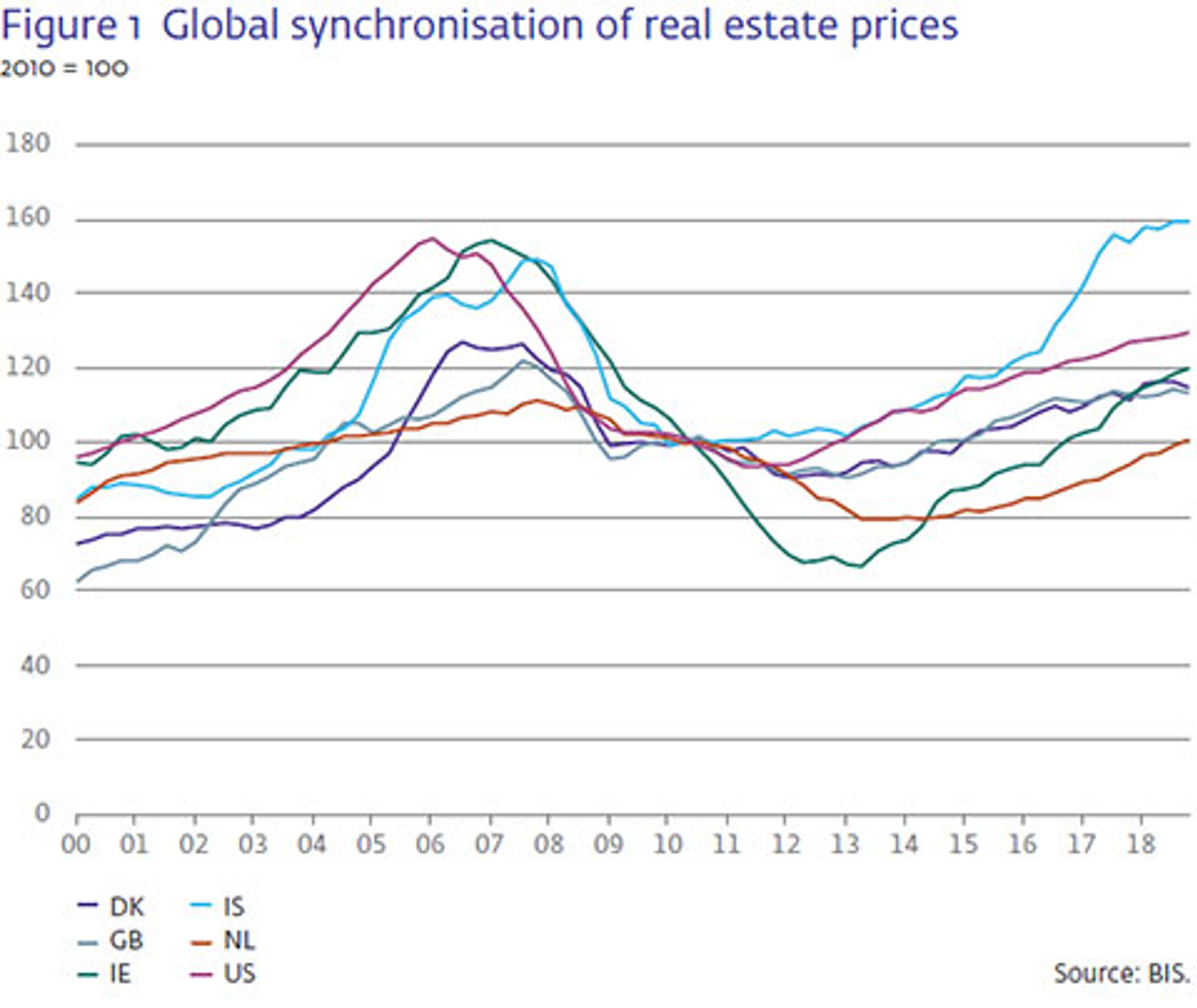Worldwide increase of residential and commercial property prices
In many countries, prices of residential and commercial real estate are high compared to rents and developments in income. Central banks are concerned about the consequences of a potential market correction. In many cases, however, current price developments can be largely explained by fundamental drivers such as low interest rates, higher incomes and population growth. Low returns on financial assets such as bonds also contribute to increasing demand for real estate.
Despite increasing synchronisation of property prices at the global level, this does not mean that there is a global real estate market. Each country has its own distinctive real estate market due to differences in spatial planning, tax policy and financial regulations. For example, there are substantial differences between the Dutch and German housing markets: over the past few decades, property prices in Germany, with its substantial rental sector and stricter financing requirements, have developed at a far more moderate pace compared to the Netherlands, with its more lenient financing standards and mortgage interest rate tax relief.
Growing role of international investors in residential and commercial property markets
The report also highlights the growing presence of international investors in residential and commercial property markets, since these markets are still delivering above-average returns. Real estate prices are soaring in countries with a significant share of international investors. If these investors quickly withdraw from these markets in times of crisis, policymakers will be unable to mitigate this risk with macroprudential policy. In many cases, international investors are not subject to national regulations, since they do not fund their purchases through domestic banks. Many policymakers therefore tend to impose tax measures specifically targeting foreign buyers, such as higher property transfer taxes.
The CGFS report highlights a key finding from the publication Hot Property (2019) that foreign capital mostly flows to real estate in larger cities. The demand for residential property in these cities is surging, especially in the younger, migrant and highly-educated target groups. Investors are therefore purchasing residential property in these cities, contributing to the increasing demand. The response on the supply side is slow due to spatial planning and bureaucratic restrictions. The combination of growing demand and lagging supply creates stronger price growth in the cities compared to the rest of the country.









